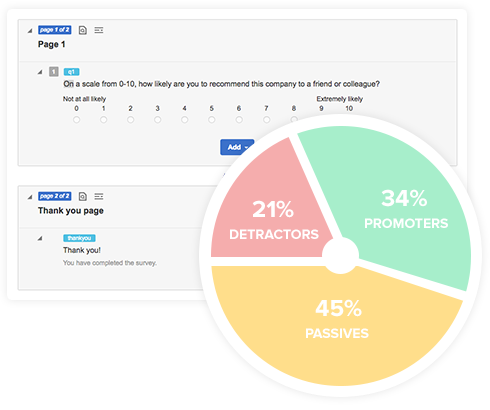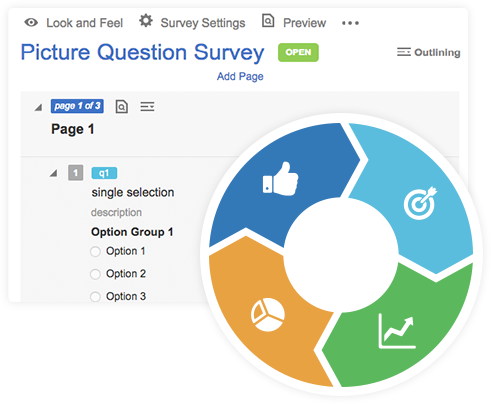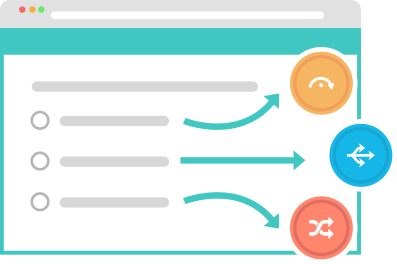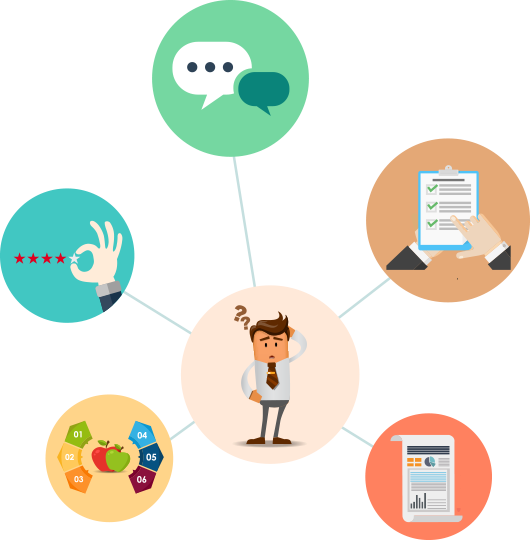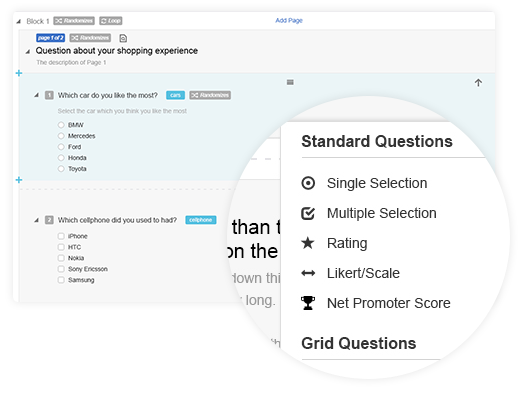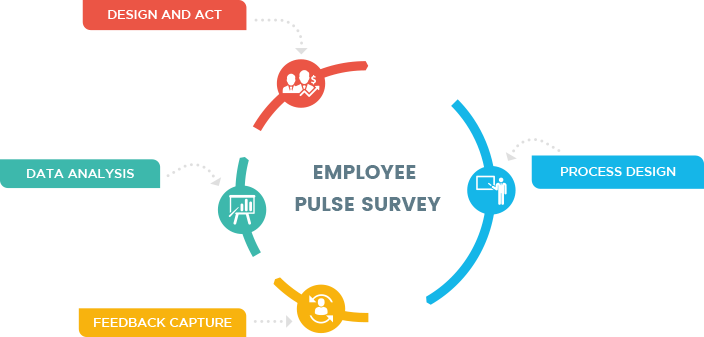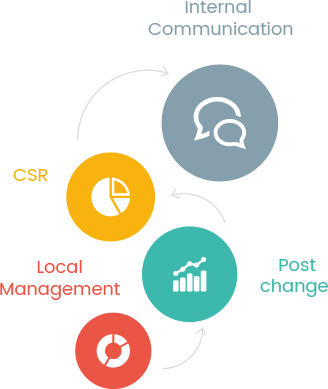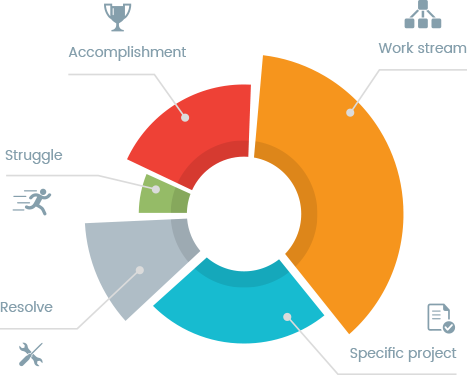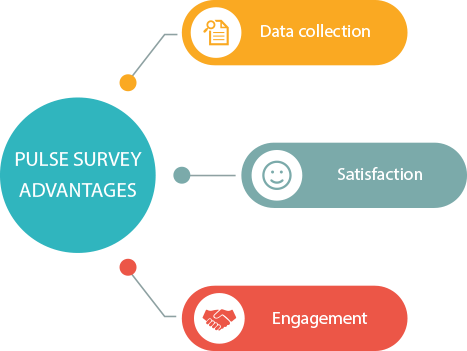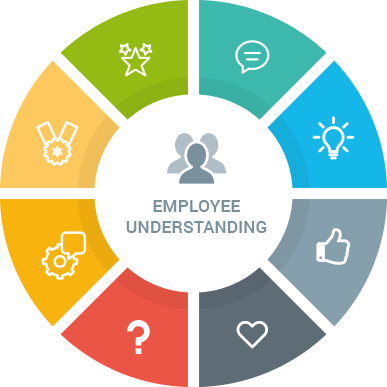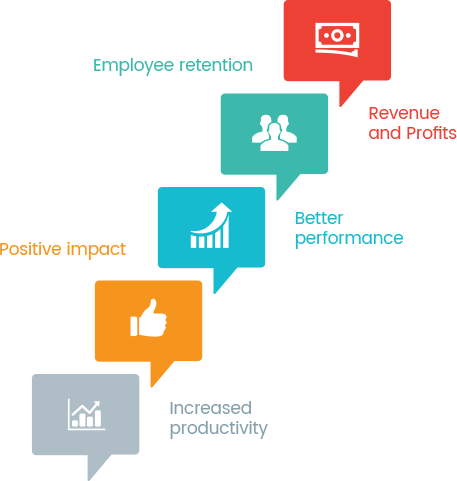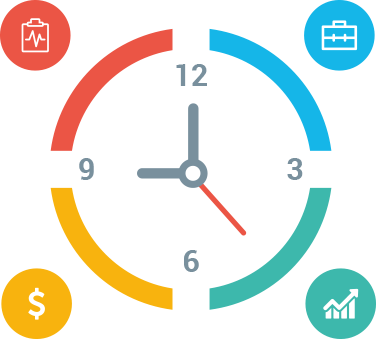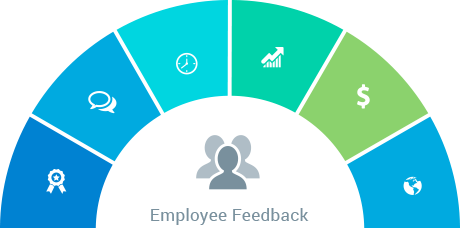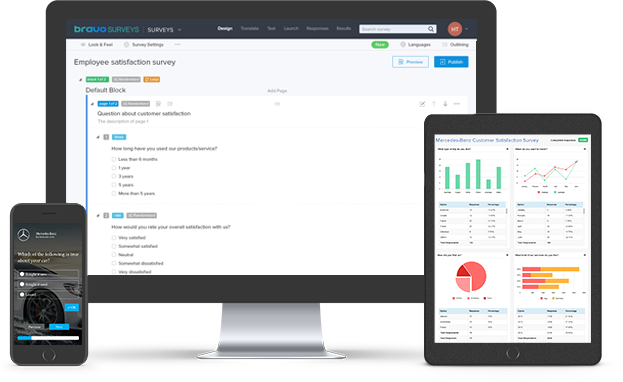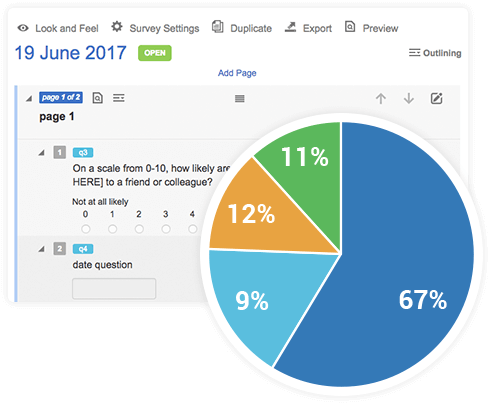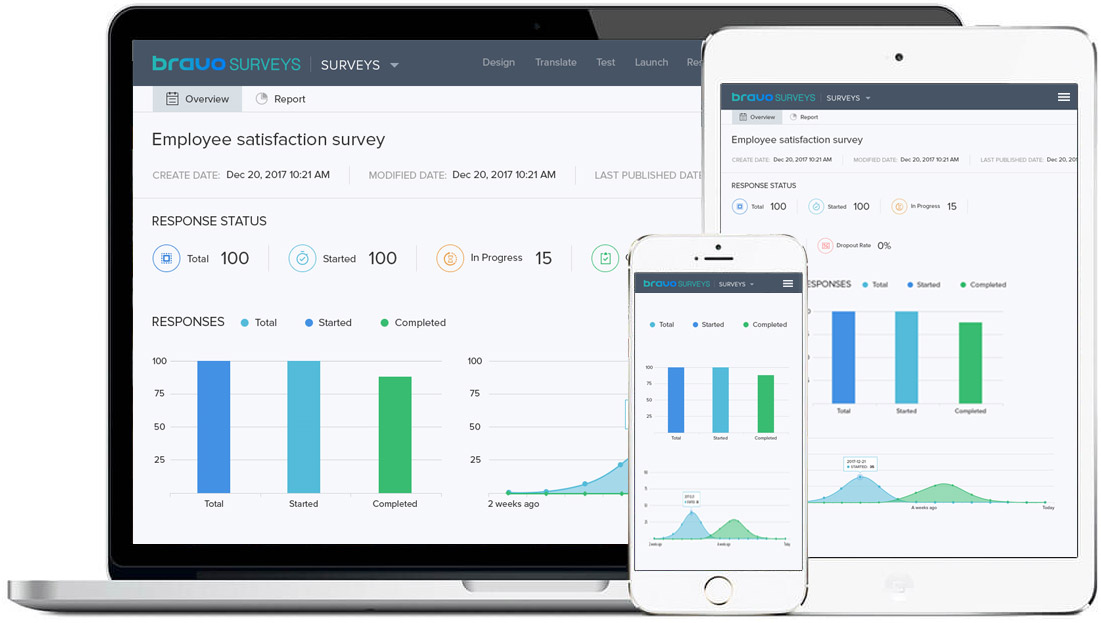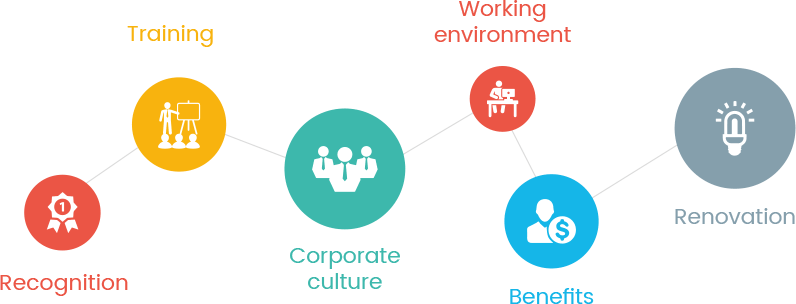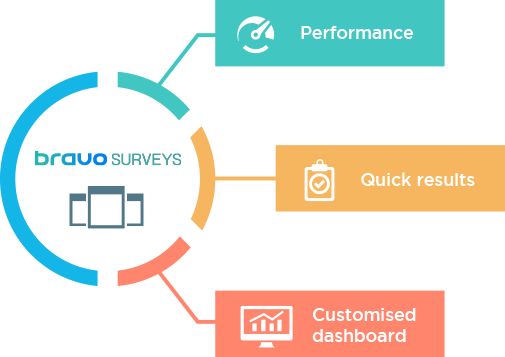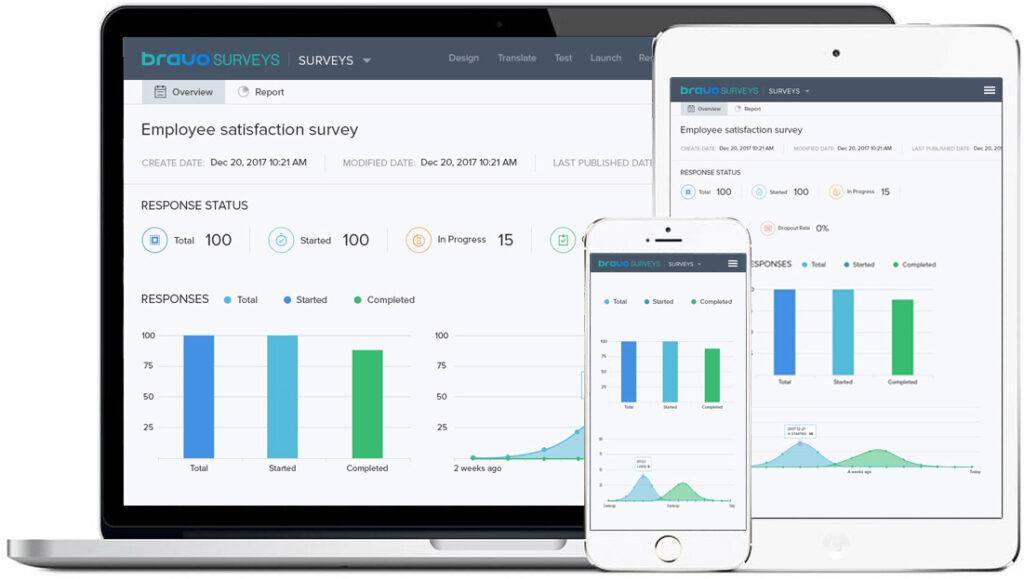An Employee Pulse survey is a short, time-saving and specifically targeted survey. It usually consists of 5-10 questions and seeks information on a particular area for improvement.
With a format like this, it is not an issue to distribute the survey weekly. Some of the questions may vary every time, while others may need to stay the same in order to measure trends over weeks or months.
Employee Pulse surveys are so easy to set up and use that your staff members will be happy to give you feedback on regular basis. What is more, you will have all the information needed to identify potential or current problems, create strategies to resolve them, measure and monitor the outcomes and even review ROI on particular areas. Employee Pulse surveys provide the most accurate insights on the health of a company. Not only the data collated is relevant, but it can also be real-time, which means you know what is happening in your organisation right at this moment.
Why is employee pulse survey important
Modern day businesses need to quicken processes as much as possible and collecting employee feedback annually is not an option. With Pulse surveys small batches of data on important subjects are easily accessible for the employer.
Of course, Employee Pulse surveys will not give sufficient information to build a full picture of the working environment and the organisational culture, but they are a vital complement to the main Employee Engagement survey. Such short questionnaires are most efficient in tracking the progress of engagement survey initiatives. They are also better suited to keep the company focus on the employee engagement strategies.
Types of pulse surveys
Progress measurement survey
In the case where an employer is trying to measure the outcomes of action plans implemented in response to identified employee engagement drivers, they would use the Progress Measurement Pulse survey. These surveys are not distributed to everybody, but just a sample group of employees representing 10-25% of the entire workforce in the company. The content of these questionnaires is also quite short, normally 5-10 repeat questions, taken from the census engagement survey, which was the initial base for creating the current action plan. This helps managers measure the progress and effectiveness of the outlined actions in the plan.
Pop-up survey
These are one-off surveys that target specific information on recently introduced initiatives or items related to the employees. Pop-up surveys are not exactly Pulse surveys as they are not repeated over time. Here are some common pop-up surveys:
- Internal Communication Survey
- Corporate Social REsponsibility Survey (CSR)
- Post-change Survey
- Local Management/ Team Survey
Recurrent employee sentiment measurement survey
These surveys allow leaders to peek into the employee’s mood and sentiments towards the organisation on regular basis. They also enable the employer to compare data from the past and present and see how employees feelings and attitude change over time. Recurrent Employee Sentiment Measurement surveys use a full or a shorter proxy of an engagement measure, such as eNPS. The time periods over, which the survey should be distributed vary from weekly to monthly and quarterly and depend on the type of information the company is trying to collate. The questions should be kept to minimum (1-5) so that employees don’t lose interest in completing it regularly.
What is an employee pulse survey
An Employee Pulse survey is a short, time-saving and specifically targeted survey. It usually consists of 5-10 questions and seeks information on a particular area for improvement.
With a format like this, it is not an issue to distribute the survey weekly. Some of the questions may vary every time, while others may need to stay the same in order to measure trends over weeks or months.
Employee Pulse surveys are so easy to set up and use that your staff members will be happy to give you feedback on regular basis. What is more, you will have all the information needed to identify potential or current problems, create strategies to resolve them, measure and monitor the outcomes and even review ROI on particular areas. Employee Pulse surveys provide the most accurate insights on the health of a company. Not only the data collated is relevant, but it can also be real-time, which means you know what is happening in your organisation right at this moment.
Why is employee pulse survey important
Modern day businesses need to quicken processes as much as possible and collecting employee feedback annually is not an option. With Pulse surveys small batches of data on important subjects are easily accessible for the employer.
Of course, Employee Pulse surveys will not give sufficient information to build a full picture of the working environment and the organisational culture, but they are a vital complement to the main Employee Engagement survey. Such short questionnaires are most efficient in tracking the progress of engagement survey initiatives. They are also better suited to keep the company focus on the employee engagement strategies.
Types of pulse surveys
Progress measurement survey
In the case where an employer is trying to measure the outcomes of action plans implemented in response to identified employee engagement drivers, they would use the Progress Measurement Pulse survey. These surveys are not distributed to everybody, but just a sample group of employees representing 10-25% of the entire workforce in the company. The content of these questionnaires is also quite short, normally 5-10 repeat questions, taken from the census engagement survey, which was the initial base for creating the current action plan. This helps managers measure the progress and effectiveness of the outlined actions in the plan.
Pop-up survey
These are one-off surveys that target specific information on recently introduced initiatives or items related to the employees. Pop-up surveys are not exactly Pulse surveys as they are not repeated over time. Here are some common pop-up surveys:
- Internal Communication Survey
- Corporate Social REsponsibility Survey (CSR)
- Post-change Survey
- Local Management/ Team Survey
Recurrent employee sentiment measurement survey
These surveys allow leaders to peek into the employee’s mood and sentiments towards the organisation on regular basis. They also enable the employer to compare data from the past and present and see how employees feelings and attitude change over time. Recurrent Employee Sentiment Measurement surveys use a full or a shorter proxy of an engagement measure, such as eNPS. The time periods over, which the survey should be distributed vary from weekly to monthly and quarterly and depend on the type of information the company is trying to collate. The questions should be kept to minimum (1-5) so that employees don’t lose interest in completing it regularly.
Specific project measurement survey
This type of Pulse surveys don’t focus on employee engagement. They aim to measure the experience of working on a specific project or workstream. These Pulse surveys also provide leaders with insights on issues related to accomplishing work on time or with less struggle and how to resolve them.
How can employee pulse surveys benefit your organisation
Keep on top of progress between organisational surveys
Employee Engagement surveys are large-scaled and they have a wide scope of information to explore. Therefore, employers can’t get enough information on key metrics that the company needs to pay further attention to only by using a broad survey. For this purpose Employee Pulse surveys are introduced as they allow leaders to dig deeper on specific areas and track the progress between each survey cycle. In addition, using short surveys with a specific focus, gives the management the opportunity to spot and act quickly on any concerns before they turn into serious issues.
Find out how effective the actions you’ve taken are
After you’ve collated all data from the annual Employee Engagement survey, as a good leader you will create an action plan to respond to the identified issues in your organisation. Pulse surveys help you find out whether the actions you have outlined and undertaken are actually effective. Because Pulse surveys are done between shorter periods of time, they give accurate and timely measurement of any progress made. Furthermore, by introducing them, you show your employees that their voice is heard and you are truly committed to make positive changes in the company for the benefit of everyone working there.
Have current and relevant data on employee engagement and satisfaction
The biggest advantage of using Pulse surveys is that the frequent and quick data collection allows you to build a real-time picture of the work environment you are creating. You will know exactly how satisfied and engaged your employees are at any stage of change implementation or general Employee Engagement monitoring.
Understand how your employees feel by listening to them continuously
Continuous listening has proven to be a successful practice for many businesses worldwide who want to reach higher level of Employee Engagement. A very good practical example is the “Suggestion Box” Pulse survey in which members of staff can give their ideas, recommendations and general feedback on different areas of the life at work.
Pulse surveys cannot replace annual Employee Engagement surveys entirely, but they can give valuable insights on the quality of daily operations and general staff sentiments on specific topics.
Identify the reasons behind an action failure or success
The reasons why certain initiatives implemented by your organisation have failed or succeeded can be many and diverse. Pulse surveys are the little helpers that assist you in finding out what exactly has gone right or wrong. The best thing about these surveys is that they allow you to spot potential flaws during the process of changes in the organisation. This way any underperforming initiatives can be reviewed and improved and those that are particularly good, enhanced and pushed further.
Pulse surveys can tell you if your employees understand the need for change and whether they are committed to that change.
Increase the level of your employee engagement
Regular request of opinion promotes Employee Engagement, which in turn leads to better business performance.
A number of studies have shown that high levels of Employee Engagement bring various benefits, such as the following:
- Increased productivity and less holiday requests
- Positive impact on customer satisfaction
- Better performance and genuine interest in the job, usually leading to innovation
- Higher employee retention
- Boost in revenue and profits and establishment of a positive company image
Relate with your employees effectively
Bridge the gap between management and workers by using Pulse surveys regularly. Employees are more loyal and engaged when they know they have the opportunity and right to speak up.
Be more time-efficient
Pulse surveys can also reduce your costs by saving both you and your employees time. They are short and simple, which means it will take only a couple of minutes for your members of staff to complete them. All the information collected from the responses is easily digestible, so it won’t take you long to draw conclusions from the survey either.
Get more responses
It’s quick and effortless, who wouldn’t have a minute or two to spend on a Pulse survey? Many companies have found that introducing these surveys increased the employee response rates by far.
Learn what motivates your employees
It is important to know what are the main motivational triggers for your staff. This way you can encourage them to do better by acting on the things that inspire and motivate them. Pulse surveys are the right tool to help with that.
Promote open communication
When an employee feels confident in voicing their opinion or making suggestions they are encouraged to communicate openly and sincerely with the management. In this sense, Pulse surveys strengthen the good relationship between leaders and workers.
Let your employees know that you value their opinion
Distributing frequent Pulse surveys shows your employees that you are interested in what they have to say and their feedback is highly appreciated. Research studies suggest that most workers like and value employers who ask for their opinion and this makes them more satisfied in their job.
What to consider when selecting a survey software
Gone are the days of pen and paper surveys and this is definitely a good thing, not only because it saves the environment, but also because it makes the process of data collection much quicker and easier by using the Internet. Surveys that are powered by a cloud software benefit from frequent improvements and feature updates.

Are the surveys optimised for mobile devices?
In most developed and developing countries the use of mobile Internet as opposed to desktop Internet is constantly increasing. This means, in order to keep in line with current technology trends you have to make sure your surveys are mobile friendly.

Can the answers be anonymous, identifiable or a combination of both?
Many organisations use anonymous surveys because they believe this way employees will be more open and honest. In a number of cases, however, leaders have discovered that identifiable responses are actually more beneficial to the company’s efforts to make certain improvements or changes.

Can you customise your questions?
Finding a survey software with a large question bank is often not the best solution. At times you will need to tweak particular questions to source you specific information, unique to your organisation, this is why choosing a provider who allows customisation is very important.

How comprehensive the reports are?
When you conduct a survey you want to collect as much relevant information as possible. However, it is essential to be able to easily understand what that data means from the reports drawn after the responsed have been received.

Is the survey user friendly?
If you want higher response rates, then you need to make sure that the survey you are distributing is not too complicated to use and will cost little efforts to your employees to complete it.

What form of security is implemented in the survey?
Data protection is a very serious matter. Most survey softwares have SSL secure certificates, but it’s also important to know what recovery processes have been implemented and if the provider is hosted on a dedicated high-capacity server to ensure no data will be lost in case of a failure.

What other features are there?
It’s always good to know of any extra features that the survey software is offering. Even if you don’t want to use them at present, you may need them in the future.

How much does it cost?
Always check the full cost of a selected survey software. This means ask about set-up or exit fees and any other charges and expenses that may have not been listed in the advertised ‘per user’ or ‘monthly’ costs.

Can you get real-time feedback?
More and more companies are interested in survey softwares, which provide real-time feedback or pulse surveys. While those are usually very beneficial for keeping up to date with the employee’s needs, wants and sentiments, they are not needed in absolutely every organisation. Pulse surveys are a best fit for fast-growing companies, businesses that are undergoing major transformation and organisations in fast-paced industries like retail.
bravoSURVEYS – the solution you need
bravoSURVEYS Employee Pulse Survey is a powerful tool, assisting in the process of increasing Employee Engagement. It helps employers monitor current staff sentiments with minimal cost and efforts. It is important to learn how to use bravoSURVEYS Employee Pulse Survey effectively and maintain a digestible flow of information in your organisation.
Want to know more? Click here to explore further our Employee Engagement software or schedule a demo to have a first-hand experience with the tool and get a free engagement strategy consultation from one of our experts.









